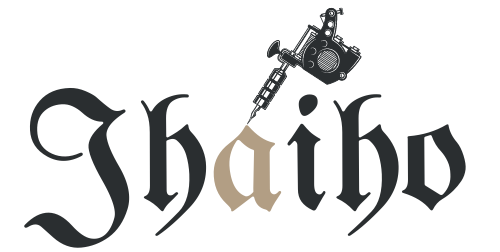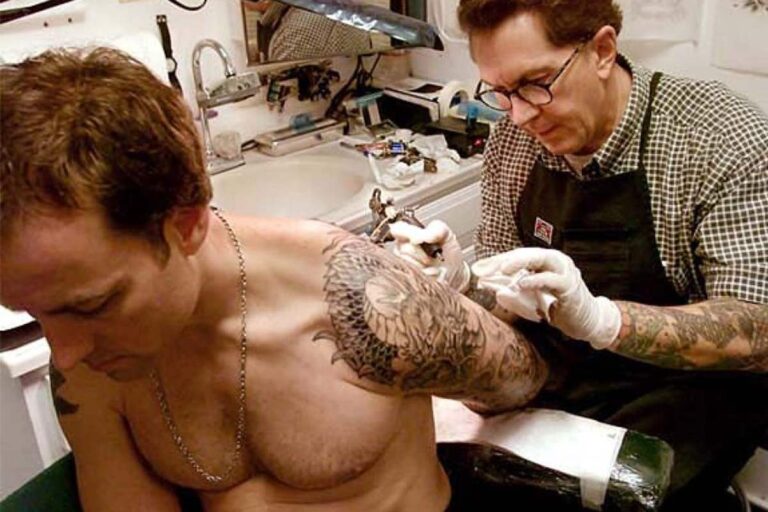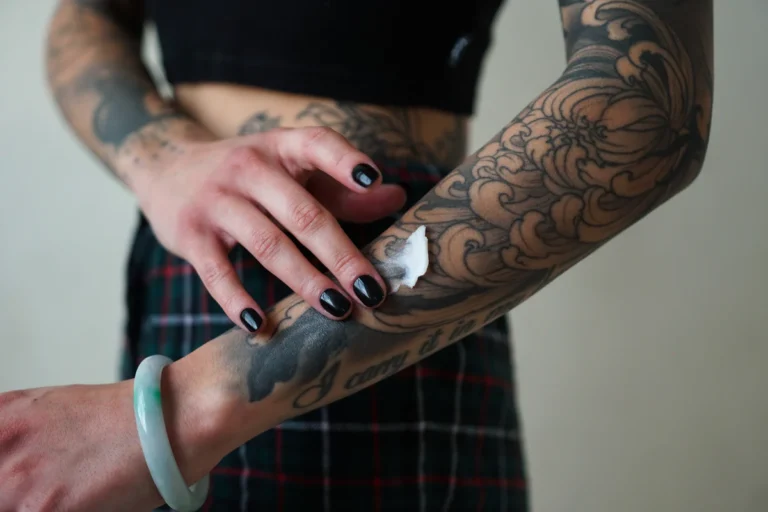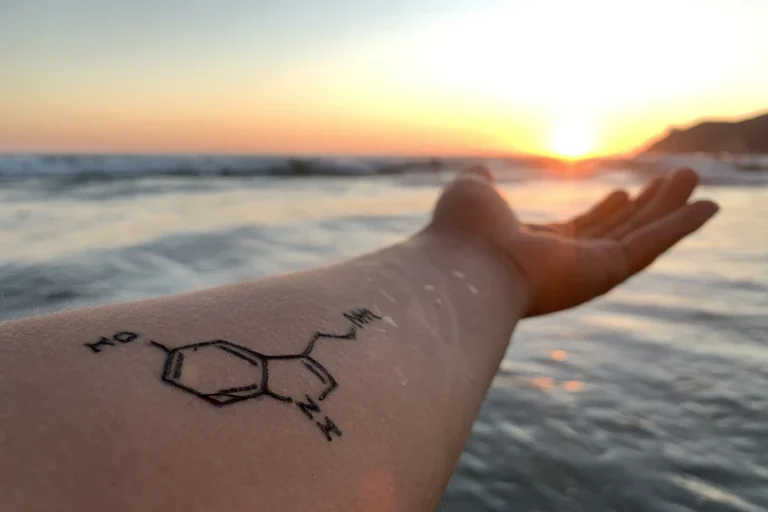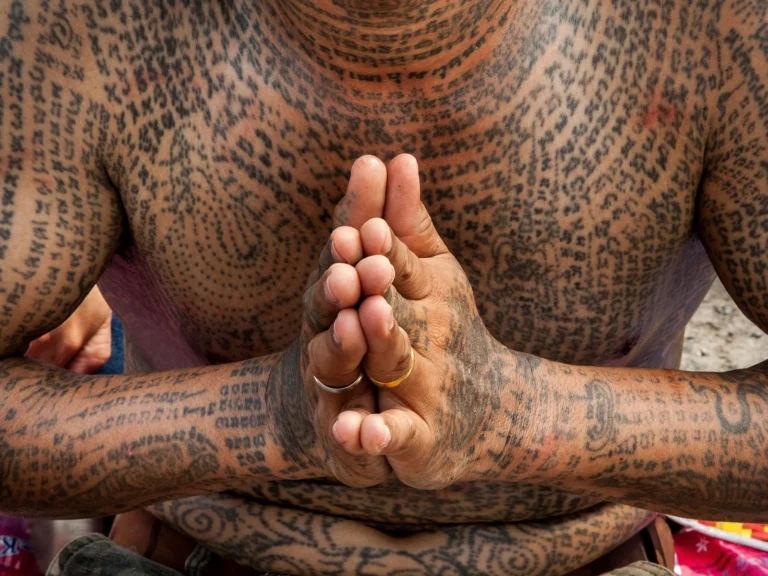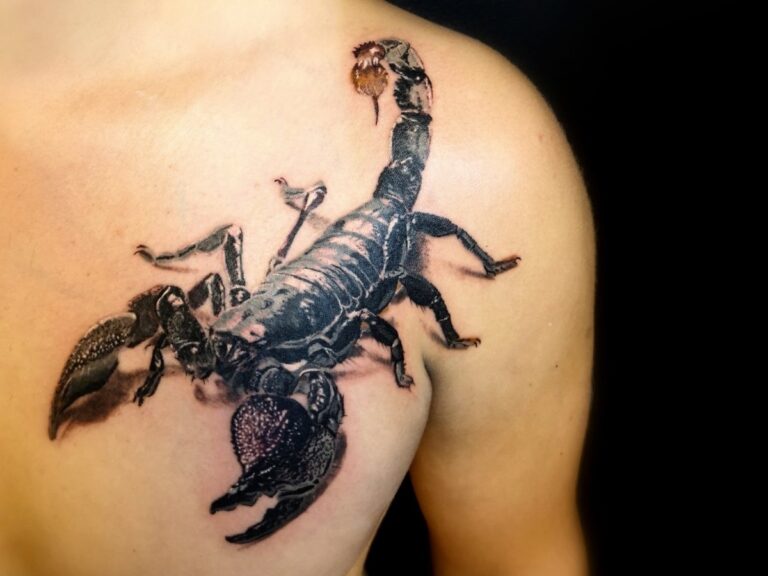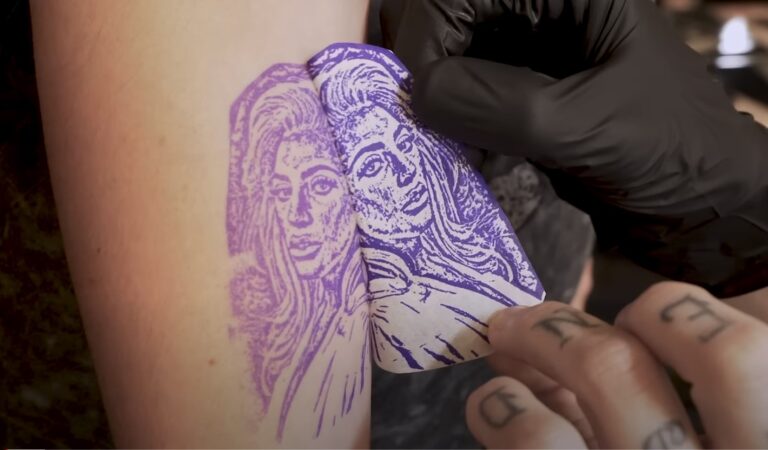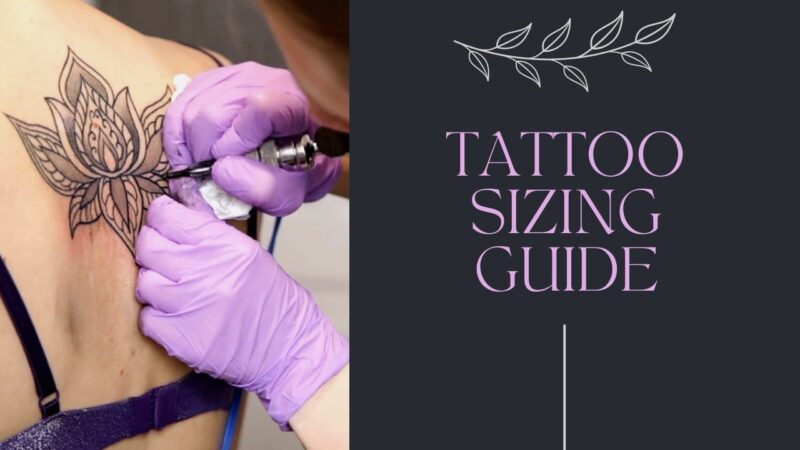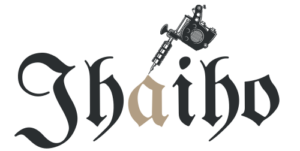Want to get a tattoo, but not sure what size to get?
Or maybe you’ve heard terms like ‘6-inch’ thrown around and have absolutely no idea what that means or how a ‘6-inch’ tattoo would actually look on your skin?
Perhaps you have an idea of what you want to get, but are having difficulty figuring out how your desired tattoo size is priced?
Our Sizing Guide can help you figure this all out! From learning how to properly measure a tattoo to knowing what to tell your artist when they ask you – “what do you really want?”
Tattoo Measurement
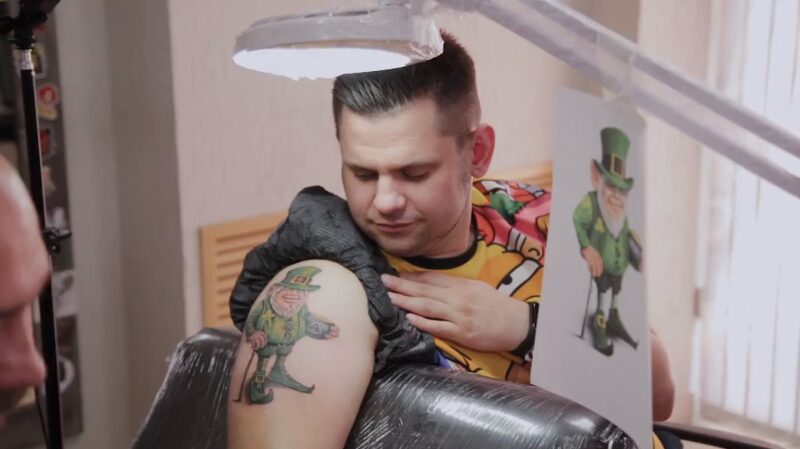
Why Measure a Tattoo?
You might wonder what the point of measuring a tattoo is – just go in and get it done, right? WRONG! Size does matter.
Tattoo Design
Firstly, size impacts design. You can’t get a tattoo that has a lot of detail done in an extra small size, because many of the details might get lost.
Think of trying to get a beautifully detailed portrait of a loved one to fit into an extra small one – doesn’t really work, does it? At least not unless you invest in a VERY skilled artist!
Tattoo Price
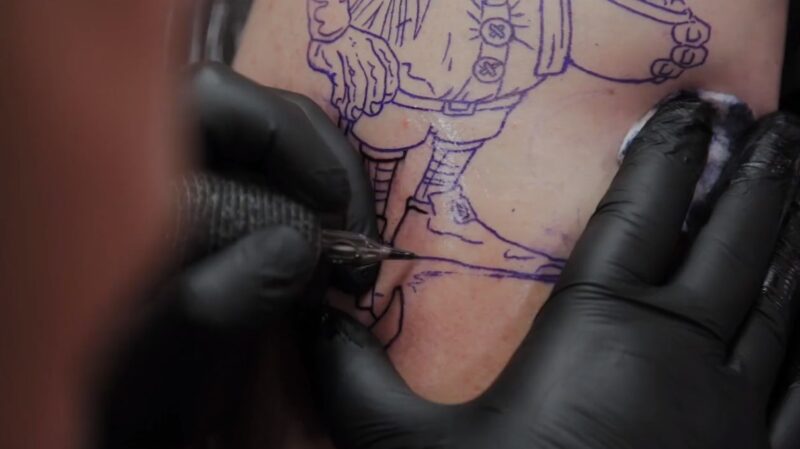
Secondly, size impacts price.
When considering a tattoo, price is a crucial factor influenced by various elements.
One of the main determinants is the size.
While some artists charge an hourly rate, many prefer to charge per square inch. This means that the larger your tattoo, the higher the overall cost.
The final cost is also affected by the artist’s experience, the studio’s reputation, and the materials used. Here are some general price ranges based on type and placement:
| Type | Price Range |
|---|---|
| Full Sleeve | $2000 to $4000 (outline only); up to $6000 (full color) |
| Full Back | $2500 to $5000 (outline); additional $200 for color |
| Forearm | $250 to $1300 based on size, design, and color |
| Chest | $600 to $2000 depending on design complexity |
| Finger | $50 to $500 based on detail and location |
| Hip/Thigh | $500 (outline); $1500 to $2000 (full color) |
| Shoulder | Begins around $800 |
| Ankle | $50 to $250 depending on details |
| Lip/Face | $500 to $3000 |
| Full Body | $100,000 or more |
| Tiny | Minimum shop cost, typically $50 to $150 |
If price is a major concern, consider opting for a smaller tattoo or breaking a larger design into multiple sessions.
This allows you to spread out the cost over time without compromising on quality by choosing a less experienced artist who charges a lower rate.
Trust us, it’s worth investing in a skilled artist to ensure you’ll be proud of for years to come.
Tattoo Pain, Care, and Healing
Thirdly, the size impacts healing and aftercare.
Smaller tattoos will hurt less since it takes much less time to ink them. They will often heal faster, especially with proper aftercare.
Most people get small and extra-small ones on their hands, feet, face, lips, and neck. They’re easy to hide and usually look beautiful on these placements. Unfortunately, these also mean more aftercare and potentially many, MANY touchups!
Not only are these some of the most painful places to get one, they’re also the placements where tattoos fade faster due to daily wear and tear and exposure to water and sunlight. In addition, lip and finger tattoos are known to smudge.
So if you’ve ever heard someone say ‘finger tattoos are a bad idea‘ – that’s why!
Materials
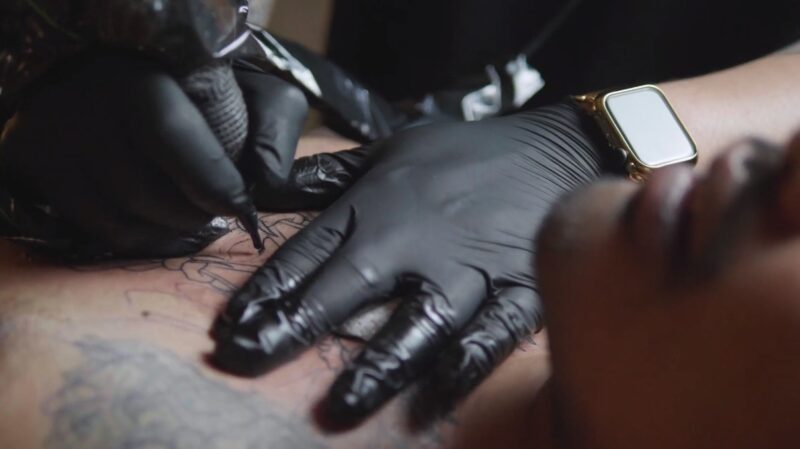
The size of your tattoo directly impacts which materials are used during the inking process. Tattoo needle sizes, in particular, vary depending on the design and complexity of the tattoo.
For smaller, more minimal ones, a single needle or a small grouping of needles is typically used to achieve fine lines and intricate details. This allows for precision and ensures that the delicate aspects of the design are executed cleanly.
Conversely, larger ones that require significant filling and shading will necessitate the use of larger needle clusters. These needle groupings can cover more skin surface area efficiently and help create smooth, consistent shading and bold outlines.
The choice of needles affects the overall appearance and quality, making it essential for artists to select the appropriate tools for each design.
In addition to needles, other materials such as different types of ink, stencil paper, and skin prep solutions also play a role.
High-quality inks are vital for achieving vibrant, long-lasting colors and reducing the risk of allergic reactions. The choice of materials is crucial in ensuring a safe, efficient, and successful tattooing process.
Placement
Deciding on the size of your tattoo also helps determine the ideal placement on your body.
Certain body parts are better suited for specific sizes, and knowing how large or small you want your tattoo can guide you in choosing the right location.
For instance, you cannot get a large one on your finger due to the limited surface area. Finger tattoos are typically small and simple because of the delicate skin and the need for precision in a confined space.
Similarly, if you desire a large, detailed tattoo, areas like the back, chest, or thigh provide ample space to accommodate the design. These larger canvases allow for more elaborate artwork and can be ideal for pieces that require extensive detail and color.
The relationship between size and placement ensures that the tattoo fits well with the natural contours of your body and achieves the desired aesthetic effect.
Consulting with your tattoo artist about both size and placement will help you make an informed decision that enhances the overall look of your new ink.
Putting It All Together
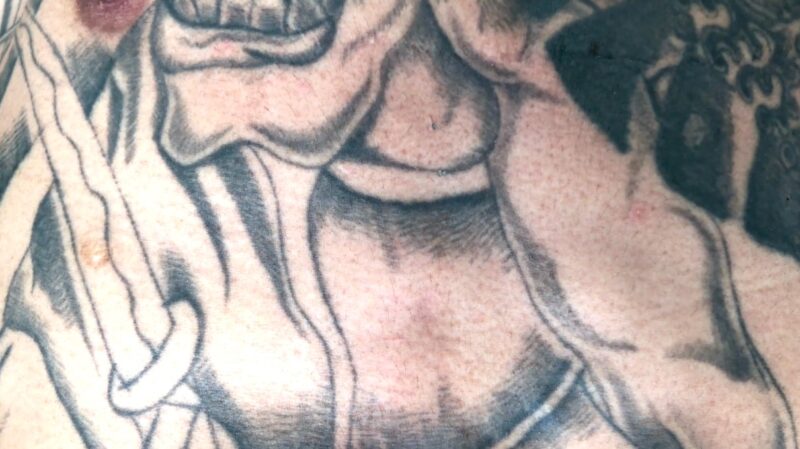
Let’s say you want an ankle or wrist tattoo. These are small areas, so you’re looking at getting a small tattoo. But how small?
Consider getting a tattoo that is 2 inches in height and 1 inch in width. Multiply 2*1 to get 2 square inches. Based on our guide below, that makes it an extra-small (XS) sized one.
It would look a little something like this:
Fits perfectly, doesn’t it?
If you want a much larger tattoo on the same spot, you’d either need to extend it into a band or half-sleeve going around your calf – or you’d need to pick a different spot. And that will naturally cost a lot more!
So when someone says ‘a 6-inch tattoo’, you know now that what they’re talking about is a tattoo that is 6 square inches in size. This could mean anything from:
- 2*3 inch or 3*2 inch
- 1*6 or 6*1 inch.
It all depends on the design of the tattoo, but all of these dimensions will result in 6 square inches in size, which makes a small tattoo.
How big is a medium-size tattoo? Usually, about 15 square inches. We recommend this size and larger for any tattoo with detailing. For instance, a portrait tattoo should be about a medium-size or larger.
Now you’re probably having some unsavory flashbacks to that one time in high school where you had to answer a math problem and said ’42’ because isn’t that the answer to everything?!
So enough with the numbers – and the flashbacks!
Go on and check out our visual sizing guide below!
How to Measure a Tattoo
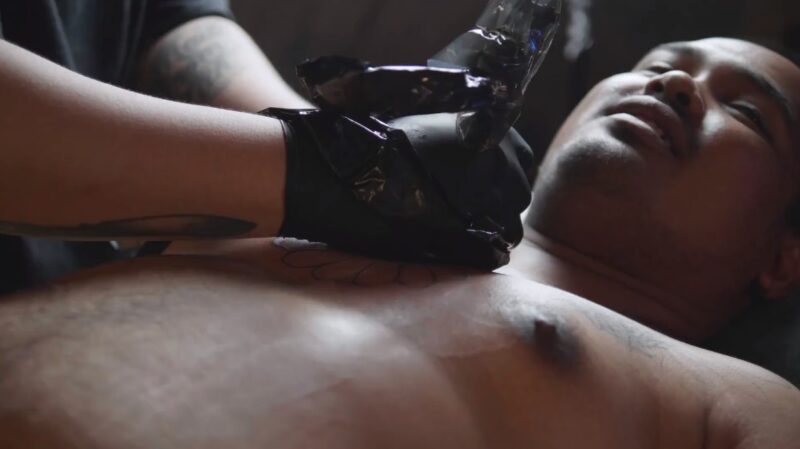
Step 1: Measure the height and width
Knowing how to measure a tattoo will help you explain to your artist what size you want. It also helps you estimate a price based on the artist’s rate. So how do we do it?
Start by measuring the height and width of the design you want to get.
Next, convert it into inches – they are almost always measured in inches and square inches. So when you work out what you want, make sure you make a note of your tattoo size in inches.
Step 2: Convert to square inches
Lastly, multiply the height by the width to get the square inch size. This is what you’ll tell your artist when you discuss your design with them, so be sure to double check that you’ve got the right size!
And that’s it!
Now go on and get inked!
Final Words
Knowing the size of your desired tattoo is crucial for determining its design, cost, healing process, and placement.
It’s important to consider both the aesthetics and the practicality to ensure the one you have lasts.
Before heading to a tattoo studio, take the time to plan. Measure, calculate, and envision your tattoo thoroughly.
The preparation will make you more confident and satisfied with your choice.
